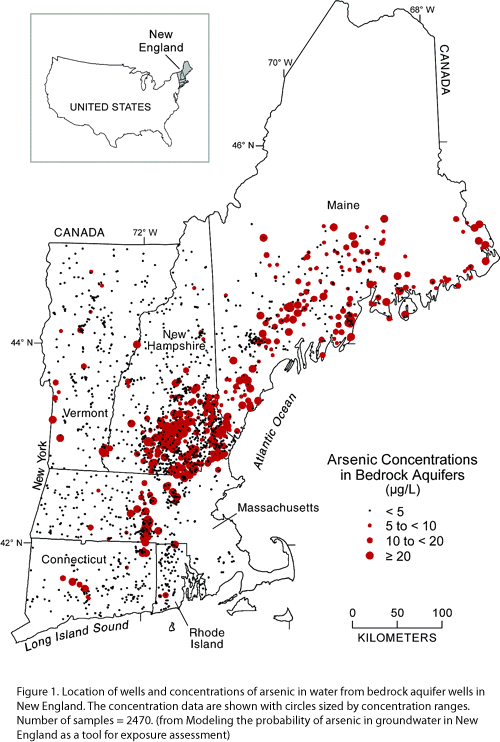
Arsenic is a naturally occurring element found in water, soil, air, animals and plants. Although it has a reputation for being highly poisonous, most humans are exposed to small amounts of arsenic through the course of their daily activity without incident.
However, at higher levels, arsenic can cause a variety of very serious health issues (see list below).
Like many environmental contaminants, when arsenic is dissolved in water, you cannot see, smell or taste it. The only way to know if your drinking water is safe is to have it tested by a certified laboratory.
The U.S. Geological Survey estimates that one in five private wells in New Hampshire has water with dangerous levels of arsenic. Our standard water testing package at ARA includes testing for arsenic, as well as other common contaminants.
To have your drinking water tested for arsenic and other harmful contaminants, contact ARA or find a certified water testing laboratory near you. The lab will provide you with a water testing kit and instructions for testing your water. Learn more about collecting and submitting water samples here.
Arsenic Exposure and Human Health
According to researchers, arsenic may increase the risk of certain cancers, heart disease, and may impact growth, brain development and immune function.
Studies have shown a link between arsenic exposure and the following:
- bladder cancer*
- lung cancer
- skin cancer
- kidney cancer
- liver cancer
- nervous system damage
- heart and blood vessel damage
- serious skin problems
- birth defects
- reproductive problems
*According to the CDC, New Hampshire has the highest incidence of bladder cancer in the nation, a rate that is 37% higher than the national average.


